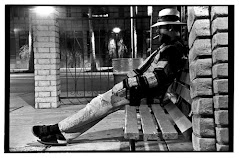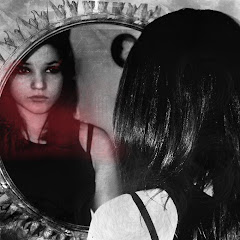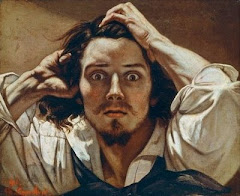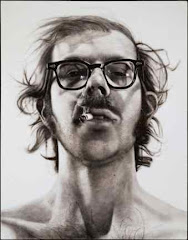 Looking at the venire of Paul Gauguin’s Self Portrait with Yellow Christ, the viewer immediately notices Gauguin with two strange objects behind him. When looking deeper, the viewer then notices Gauguin’s painting Yellow Christ behind his right shoulder, and a deformed gargoyle behind the left. The interesting use of color creates an immense amount of contrast but at the same time the intermingling of the similar hues cause the subject matter to flow. The intensity of his eyes draw the viewer in, noticing first the interesting texture the brush strokes give this entire painting. At that moment, looking deeper into the separation of Yellow Christ and the strange gargoyle, the viewer begins wondering what Gauguin is trying to portray. It is an interesting composition, unconsciously leaving the viewer inquisitive to who Gauguin was as a person and what this painting could be showing.
Looking at the venire of Paul Gauguin’s Self Portrait with Yellow Christ, the viewer immediately notices Gauguin with two strange objects behind him. When looking deeper, the viewer then notices Gauguin’s painting Yellow Christ behind his right shoulder, and a deformed gargoyle behind the left. The interesting use of color creates an immense amount of contrast but at the same time the intermingling of the similar hues cause the subject matter to flow. The intensity of his eyes draw the viewer in, noticing first the interesting texture the brush strokes give this entire painting. At that moment, looking deeper into the separation of Yellow Christ and the strange gargoyle, the viewer begins wondering what Gauguin is trying to portray. It is an interesting composition, unconsciously leaving the viewer inquisitive to who Gauguin was as a person and what this painting could be showing.A focal point is always different to every viewer. Some may say that part of the background of this piece draws their attention first. Maybe Christ and the bold, intense colors he is created with, or the viewer possibly will see Gauguin’s face first. The different values of this composition create a lot of contrast bringing the viewer to set their eyes on specific aspects of this painting. For instance, the purple tones used in Gauguin’s clothing are also placed in the background of Yellow Christ and in the nooks and crannies of the gargoyle’s shape. This, subtly creating a sense of unity, also renders contrast with the hues of orange and yellow strategically placed behind Gauguin’s face. The viewer begins to notice the expression on his face shows no emotion. The emotion and personality of this piece is shown in the objects that surround him. He tells a story in this painting, depicting his personality for all to see.
One might say this composition is Gauguin’s perception of himself. The gargoyle is most likely portraying the evil, ‘Hyde’ side of him, shown every time he lost his temper, and Christ portraying the good, ‘Jekyll’ aspects of him. The self-portrait uses hints to what Gauguin is genuinely saying about himself. The viewers can only speculation to the real meaning of this painting. Only Gauguin himself knows if this presumption is true.









No comments:
Post a Comment